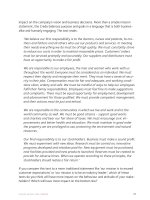Business finance ch 4 the financial environment
Bạn đang xem bản rút gọn của tài liệu. Xem và tải ngay bản đầy đủ của tài liệu tại đây (433.23 KB, 29 trang )
CHAPTER 4
The Financial Environment:
Markets, Institutions, and Interest
Rates
Financial markets
Types of financial
institutions
Determinants of interest
rates
4-1
What is a market?
A market is a venue where goods and services are exchanged.
A financial market is a place where individuals and organizations
wanting to borrow funds are brought together with those having a
surplus of funds.
4-2
Types of financial markets
Physical assets vs. Financial assets
Money vs. Capital
Primary vs. Secondary
Spot vs. Futures
Public vs. Private
4-3
How is capital transferred
between savers and borrowers?
Direct transfers
Investment
banking house
Financial
intermediaries
4-4
Types of financial
intermediaries
Commercial banks
Savings and loan associations
Mutual savings banks
Credit unions
Pension funds
Life insurance companies
Mutual funds
4-5
Physical location stock
exchanges vs. Electronic dealerbased
markets
Auction market
vs. Dealer market
(Exchanges vs.
OTC)
NYSE vs. Nasdaq
Differences are
narrowing
4-6
The cost of money
The price, or cost, of debt capital is the interest rate.
The price, or cost, of equity capital is the required return. The
required return investors expect is composed of compensation in
the form of dividends and capital gains.
4-7
What four factors affect the
cost of money?
Production
opportunities
Time preferences
for consumption
Risk
Expected inflation
4-8
“Nominal” vs. “Real” rates
k
= represents any nominal rate
k*
= represents the “real” risk-free rate of interest. Like a T-bill
rate, if there was no inflation. Typically ranges from 1% to 4%
per year.
kRF
= represents the rate of interest on Treasury securities.
4-9
Determinants of interest
rates
k = k* + IP + DRP + LP + MRP
k
= required return on a debt security
k* = real risk-free rate of interest
IP = inflation premium
DRP = default risk premium
LP = liquidity premium
MRP= maturity risk premium
4-10
Premiums added to k* for
different types of debt
IP
S-T Treasury
L-T Treasury
S-T
Corporate
L-T
Corporate
MR
P
DR
P
LP
4-11
Yield curve and the term
structure of interest rates
Term structure –
relationship between
interest rates (or
yields) and maturities.
The yield curve is a
graph of the term
structure.
A Treasury yield curve
from October 2002
can be viewed at the
right.
4-12
Constructing the yield curve:
Inflation
Step 1 – Find the average expected
inflation rate over years 1 to n:
n
IPn =
∑ INFL
t
t =1
n
4-13
Constructing the yield curve:
Inflation
Suppose, that inflation is expected to be
5% next year, 6% the following year, and
8% thereafter.
IP1 = 5% / 1 = 5.00%
IP10= [5% + 6% + 8%(8)] / 10 = 7.50%
IP20= [5% + 6% + 8%(18)] / 20 = 7.75%
Must earn these IPs to break even vs.
inflation; these IPs would permit you to earn
k* (before taxes).
4-14
Constructing the yield curve:
Inflation
Step 2 – Find the appropriate
maturity risk premium (MRP). For
this example, the following equation
will be used find a security’s
appropriate maturity risk premium.
MRPt = 0.1% ( t - 1 )
4-15
Constructing the yield curve:
Maturity Risk
Using the given equation:
MRP1 = 0.1% x (1-1) = 0.0%
MRP10 = 0.1% x (10-1) = 0.9%
MRP20 = 0.1% x (20-1) = 1.9%
Notice that since the equation is linear, the maturity risk premium is
increasing in the time to maturity, as it should be.
4-16
Add the IPs and MRPs to k* to
find the appropriate nominal
rates
Step 3 – Adding the premiums to k*.
kRF, t = k* + IPt + MRPt
Assume k* = 3%,
kRF, 1
= 3% + 5.0% + 0.0% = 8.0%
kRF, 10
= 3% + 7.5% + 0.9% = 11.4%
kRF, 20
= 3% + 7.75% + 1.9% = 12.65%
4-17
Hypothetical yield curve
Interest
Rate (%)
15
10
Maturity risk premium
Inflation premium
5
Real risk-free rate
0
1
An upward
sloping yield
curve.
Upward slope due
to an increase in
expected inflation
and increasing
maturity risk
premium.
Years to
10
20 Maturity
4-18
What is the relationship between
the Treasury yield curve and the
yield curves for corporate issues?
Corporate yield curves are higher than that of Treasury securities,
though not necessarily parallel to the Treasury curve.
The spread between corporate and Treasury yield curves widens as the
corporate bond rating decreases.
4-19
Illustrating the relationship
between corporate and Treasury
yield curves
Interest
Rate (%)
15
BB-Rated
10
AAA-Rated
5
Treasury
6.0% Yield Curve
5.9%
5.2%
Years to
0
0
1
5
10
15
20
Maturity
4-20
Pure Expectations
Hypothesis
The PEH contends that the shape of the yield curve depends on
investor’s expectations about future interest rates.
If interest rates are expected to increase, L-T rates will be higher than
S-T rates, and vice-versa. Thus, the yield curve can slope up, down, or
even bow.
4-21
Assumptions of the PEH
Assumes that the maturity risk premium for Treasury securities is zero.
Long-term rates are an average of current and future short-term rates.
If PEH is correct, you can use the yield curve to “back out” expected
future interest rates.
4-22
An example:
Observed Treasury rates and the PEH
Maturity
1 year
2 years
3 years
4 years
5 years
Yield
6.0%
6.2%
6.4%
6.5%
6.5%
If PEH holds, what does the market expect
will be the interest rate on one-year
securities, one year from now? Three-year
securities, two years from now?
4-23
One-year forward rate
6.2% = (6.0% + x%) / 2
12.4% = 6.0% + x%
6.4% = x%
PEH says that one-year securities will yield
6.4%, one year from now.
4-24
Three-year security, two years
from now
6.5% = [2(6.2%) + 3(x%) / 5
32.5% = 12.4% + 3(x%)
6.7% = x%
PEH says that one-year securities will yield 6.7%,
one year from now.
4-25









